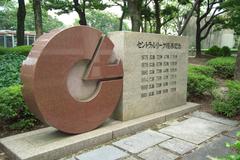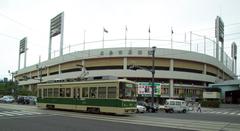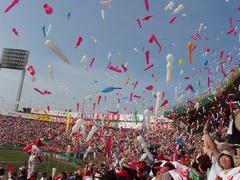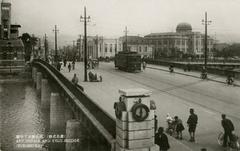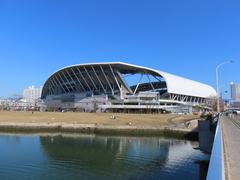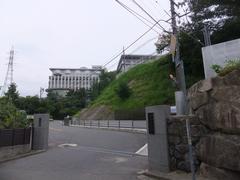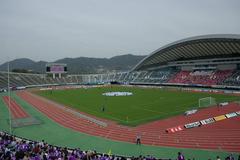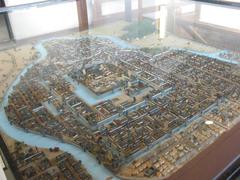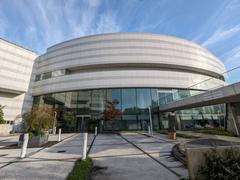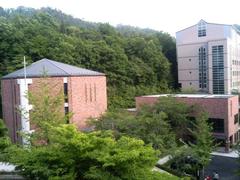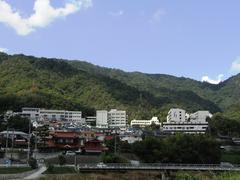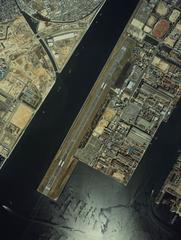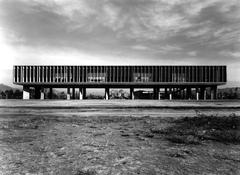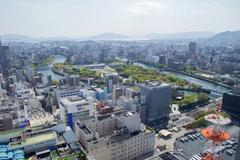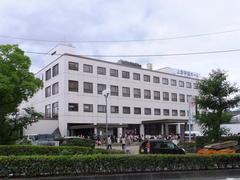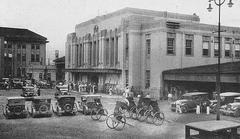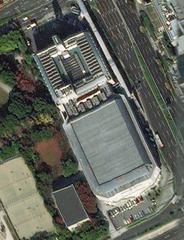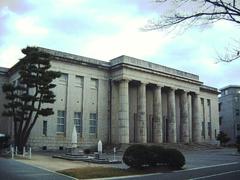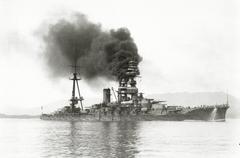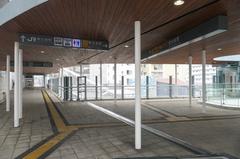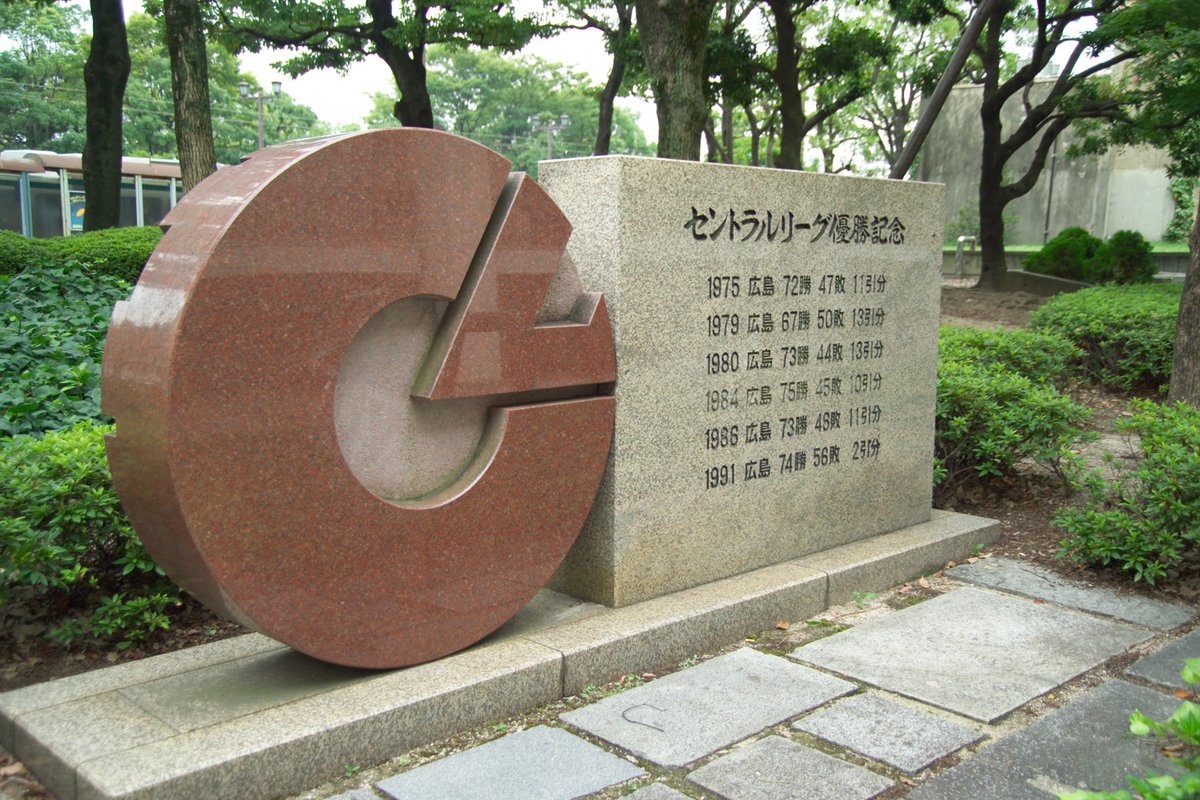
Hiroshima Municipal Stadium Visiting Hours, Tickets, and Travel Guide
Date: 14/06/2025
Introduction
Hiroshima Municipal Stadium is an enduring symbol of Hiroshima’s resilience and recovery, reflecting the city’s transformation from postwar devastation to a vibrant community hub. Originally opened in 1957, the stadium was more than just a sports venue—it was a beacon of hope and unity for Hiroshima’s citizens. Though the original stadium has been replaced by Mazda Zoom-Zoom Stadium Hiroshima, its legacy is preserved through a commemorative monument and the lively parks that now occupy its former site. This guide offers a detailed look at the stadium’s history, practical information for visitors, and tips to experience Hiroshima’s unique blend of sport and culture. (Hiroshima Peace Memorial Museum), (GetHiroshima), (Mazda Stadium Wikipedia), (Dive Hiroshima), (carp.co.jp)
Contents
- Origins and Early Development
- Construction and Inauguration
- Role in Hiroshima’s Postwar Identity
- Transition to the New Stadium
- Visiting Hiroshima Municipal Stadium Site Today
- Evolution: From Sports Venue to Urban Cultural Hub
- Visitor Information
- Social Inclusion and Accessibility
- Economic and Urban Development
- Peace, Remembrance, and Global Significance
- Mazda Zoom-Zoom Stadium Hiroshima Guide
- Location and Access
- Summary and Visitor Tips
- FAQ
- Sources
Origins and Early Development
The idea for Hiroshima Municipal Stadium emerged in the early 1950s as Hiroshima sought to rebuild after the devastation of World War II. The Hiroshima Toyo Carp baseball team, founded in 1950, quickly became a symbol of this rebirth, and the community rallied to construct a dedicated stadium. Local industry, led by a significant donation from Hiroshima Electric Railway Co., Ltd., and public support overcame financial and logistical challenges. The chosen site in Moto-machi was selected after considerable debate and negotiation. (Hiroshima Peace Memorial Museum)
Construction and Inauguration
Despite funding obstacles, the stadium was completed in July 1957, providing seating for approximately 32,000 spectators. Its opening was celebrated with community events, night games, and quickly became a focal point for sports and cultural activities in Hiroshima. The first official night game was held on July 24, 1957, and the venue hosted not only baseball but also wrestling and other community events. (Hiroshima Peace Memorial Museum)
Role in Hiroshima’s Postwar Identity
Hiroshima Municipal Stadium played a crucial role in the city’s postwar recovery, symbolizing both resilience and hope. Its location in Moto-machi, near Hiroshima Peace Memorial Park, further connected the stadium to the city’s narrative of remembrance and renewal. The venue became a gathering place for citizens, reinforcing unity and pride. (Hiroshima City Overview)
Transition to the New Stadium
By the 2000s, the original stadium no longer met modern standards, leading to the creation of the new Mazda Zoom-Zoom Stadium Hiroshima, which opened in 2009. The new facility, located near Hiroshima Station, maintained the spirit of its predecessor while offering upgraded amenities and a retro-classic design. The original stadium closed in 2010, but its memory is preserved by a monument at its former site and thoughtful urban redevelopment. (Mazda Stadium Wikipedia), (Japan Tourism Agency)
Visiting Hiroshima Municipal Stadium Site Today
Hours and Access
The former stadium site, now part of Hiroshima Gate Park and Stadium Park, is open daily from dawn to dusk (typically 6:00 AM to 9:00 PM). No tickets or entry fees are required to visit the commemorative monument. The site is wheelchair accessible, with paved paths and proximity to public transport (Moto-machi tram stop). (Dive Hiroshima)
Nearby Attractions
Key attractions within walking distance include Hiroshima Peace Memorial Park, the Atomic Bomb Dome, Shukkeien Garden, and the Children’s Culture Center. These sites provide deeper insight into Hiroshima’s history and recovery.
Evolution: From Sports Venue to Urban Cultural Hub
The stadium’s transformation into Hiroshima Gate Park and Stadium Park exemplifies urban regeneration—blending preserved stadium elements with green spaces, event plazas, and cultural programming. Portions of the original stands and benches have been retained as memorials, and the “Oyane Hiroba” covered square, inspired by origami cranes, hosts exhibitions and peace-related gatherings. The site’s design encourages community engagement while honoring history. (GetHiroshima), (Dive Hiroshima), (Into You Japan)
Visitor Information
- Open Hours: Daily, 6:00 AM–9:00 PM (event facilities may vary).
- Admission: Free for the park and monument; special events may require tickets.
- Guided Tours: Available seasonally via Hiroshima tourism office; advance booking recommended.
- Accessibility: Barrier-free walkways, ramps, accessible seating, and restrooms.
- Getting There: Easy access from Hiroshima Station and major city tram/bus lines.
Social Inclusion and Accessibility
Both the commemorative park and Mazda Stadium emphasize inclusivity, offering barrier-free access, Wi-Fi, ample seating, and facilities for families and visitors with disabilities. Cafes and shops with local specialties foster social interaction and community spirit. The park is particularly popular during cherry blossom season for hanami (flower viewing). (Into You Japan)
Economic and Urban Development
The stadium’s redevelopment reflects a thoughtful approach to urban renewal, prioritizing multifunctional public space over single-use facilities. This strategy supports ongoing economic activity, community vitality, and sustainable city growth. (Berkeley Economic Review), (Sustainability Report)
Peace, Remembrance, and Global Significance
Located near the Hiroshima Peace Memorial Park and Atomic Bomb Dome, the stadium site plays a unique role in the city’s message of peace and remembrance. Peace-themed art installations and commemorative events highlight Hiroshima’s ongoing commitment to reconciliation and hope. (GetHiroshima)
Mazda Zoom-Zoom Stadium Hiroshima Guide
Stadium Overview
Mazda Zoom-Zoom Stadium, opened in 2009, is a state-of-the-art ballpark with a capacity of approximately 32,000. Its retro-inspired architecture and modern amenities attract baseball fans and cultural visitors alike. (Mazda Stadium Wikipedia), (carp.co.jp), (baseballbiographies.com)
Visiting Hours & Tickets
- Game Days: Gates open 90 minutes before the game; stadium closes about an hour after.
- Non-Game Days: 10:00 AM–5:00 PM for ticket counters and information.
- Tickets: Buy online (carp.co.jp), at the stadium, or major convenience stores. Prices start at ¥1,700 for unreserved infield seats.
Facilities and Accessibility
- Clean, accessible restrooms, lockers, and English-language assistance.
- Dedicated bike parking, barrier-free access, and family facilities.
Food, Merchandise, and Fan Culture
- Wide range of food options, including Hiroshima-style okonomiyaki and bento boxes.
- Official Carp merchandise available at several shops.
- Vibrant fan culture with coordinated chants and the famous “Jet Balloon” release.
Guided Tours
- Advance booking required.
- Behind-the-scenes access to player areas, dugouts, and historic exhibits.
- Tours primarily in Japanese; English materials provided.
Location and Access
Mazda Zoom-Zoom Stadium Hiroshima:
2-3-1 Minamikaniya, Minami-ku, Hiroshima City, 732-0803
- From Hiroshima Station: 10-minute walk via “Carp Road.”
- By Streetcar: Take Line 1, 2, or 6 to Hiroshima Station.
- By Taxi/Car: Limited parking; public transport recommended on game days. (Dive Hiroshima), (Japan Travel), (National Stadium Tours)
Summary and Visitor Tips
- The original Hiroshima Municipal Stadium’s spirit endures through monuments and urban parks, inviting reflection and community engagement.
- Mazda Zoom-Zoom Stadium provides a modern, inclusive venue for baseball and cultural experiences.
- Combine your visit with nearby sites like Hiroshima Peace Memorial Park, the Atomic Bomb Dome, and Shukkeien Garden for a richer understanding of the city’s history.
- Purchase tickets early, especially for popular games, and utilize public transportation for convenience.
- Explore guided tours, check up-to-date visiting hours, and consult official sources for the latest information.
FAQ
Q: What are the opening hours for the former Hiroshima Municipal Stadium site?
A: The site is open daily from dawn to dusk (roughly 6:00 AM to 9:00 PM); no admission fee.
Q: How do I attend a baseball game in Hiroshima?
A: Games are held at Mazda Zoom-Zoom Stadium. Tickets are available online, at the stadium, and convenience stores.
Q: Is the park accessible for visitors with disabilities?
A: Yes, both the park and stadium offer barrier-free access, accessible seating, and restrooms.
Q: Are guided tours available?
A: Guided tours of Mazda Stadium are available by reservation; park site tours are seasonal.
Q: What other attractions are nearby?
A: Hiroshima Peace Memorial Park, Atomic Bomb Dome, Hiroshima Castle, and Shukkeien Garden.
Sources including official website and credible travel resources
- Hiroshima Peace Memorial Museum, 2025, Hiroshima Municipal Stadium Visiting Hours, Tickets, and History
- GetHiroshima, 2025, Hiroshima Municipal Stadium: Visiting Hours, Tickets & Cultural Significance
- Mazda Stadium Wikipedia, 2025, Mazda Zoom-Zoom Stadium Hiroshima
- Dive Hiroshima, 2025, Hiroshima Municipal Stadium Urban Regeneration
- Carp Official Website, 2025, Hiroshima Toyo Carp Official
- National Stadium Tours, 2025, Hiroshima Stadium Site
- Baseball Biographies, 2025, Mazda Zoom-Zoom Stadium Hiroshima Travel Guide
- The Broke Backpacker, 2025, Hiroshima Itinerary
- Japan Travel, 2025, Mazda Zoom-Zoom Stadium Hiroshima
